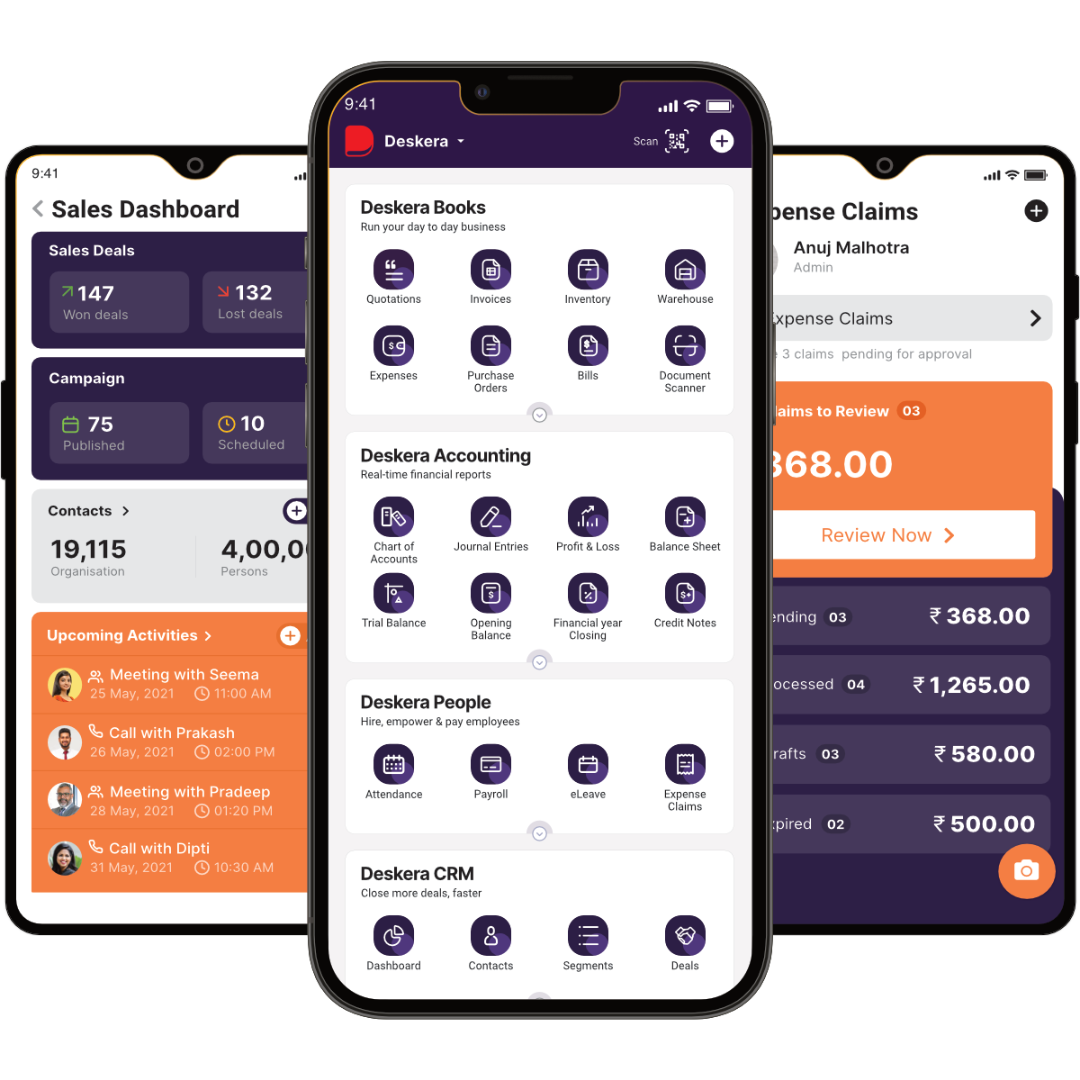It is one thing to produce excellent products and another to price them. As a manufacturer, you have excelled at manufacturing. However, the million-dollar question is: how to calculate the selling price of your products?
Understanding this element is essential as it can make or break a business. You tend to price your products incorrectly when you are unaware of the correct cost price. Cost price comprises the end-to-end costs incurred to manufacture the products. This could either lead to underpricing or overpricing them.
Both cases can drastically hamper your business. Underpricing will eventually cut down your profits. Whereas overpricing will turn away your customers. This, in turn, will lead to losses for the company. Finding a spot between these two is where your solution lies.
But how do you achieve the right selling price?
In other words, you need a solid pricing strategy that aptly evaluates your products’ prices. This post helps us learn about selling prices and many other related concepts.
- What is Selling Price?
- What is the Average Selling Price?
- How to Calculate the Selling Price of a Product
- Types of Pricing Strategies
- 4 Tips for Successful Pricing
- Incorporate an Excellent Selling Price Strategy with ERP
- Conclusion
- How can Deskera Help You?
- Key Takeaways
- Related Articles
What is Selling Price?
The selling price is the amount at which you sell your product to a customer. It is crucial to estimate a reasonable selling price that is a win-win for you and the customers. If your selling price is lower, your business will not sustain. Thus, you need to calculate and assign a product price correctly.
Your best price should eventually be a good deal for your customer.

The prices may be quoted higher when popular brands are involved. Such brands already have a considerable customer base. They may have to make significant expenditures in their marketing campaigns. Yet, people tend to buy higher-priced products. This happens due to a trusted brand image.
What is the Average Selling Price?
The Average Selling Price or ASP is the average revenue earned after selling a particular number of goods.
As the name goes, we take an average of the selling price of the goods. Assume you sold 100 units of an item. Then you add up the cost of all the goods and divide it by 100. We shall get the average selling price of those 100 goods.
Average selling price is crucial to evaluate the trends. It also allows you to make future sales projections.
In a way, it could aid start-up manufacturers in setting a pricing strategy.
How to Calculate the Selling Price of a Product
Your selling price should be such that you get a fair price. Additionally, you will need to consider the customers’ mindset. So, the first step to calculating the selling price is to evaluate the cost price.
The cost price is your cost of manufacturing. Your end product has accumulated various costs before being ready for sale. This cost includes costs incurred for marketing and sales activities. Also, costs for R&D and other activities must be included. To register a profit, you must add an amount to this cost price.
All these costs contribute to the cost price of the product.
If your company buys in bulk, calculate your product selling price by unit. Utilize the following three steps to establish your product's selling price per unit:
- Calculate the total cost of all acquired units.
- Divide the cost by the total number of units purchased to obtain the cost price.
- To determine the final selling price, use the selling price formula.
Once you have the exact cost price, you may calculate the selling price as follows:
Types of Pricing Strategies
There are three main ways in which you can price your products:
- Cost-based pricing
- Competition-based pricing
- Customer-based pricing
Cost-based Pricing
Cost-based pricing includes two steps:
- calculating your product's manufacturing costs and then
- applying a percentage mark-up to calculate the final price.
When using cost-based pricing, it is critical to include all of the costs of manufacturing your product. These could consist of the following:
- Raw materials
- Rent
- Wages
- Transportation
- Advertising
- Operational costs
- Labor costs
- Cost of using your land or capital equipment
- Cost of your machines and buildings depreciation
By including all costs in your calculations, you can ensure that your cost-based pricing is more accurate. Once the expenses have been computed, choose one of the three cost-based pricing approaches.
Mark-up Pricing
This strategy is preferred by organizations with multiple products. They use this as it is straightforward to calculate. To determine the product price, the profit level is expressed as a percentage and is added to the production cost.
Example
A fruit jam manufacturing firm creates 20 different jams and jellies. It sells the products at a local producers' market. A 250 ml jar of jam costs $4.00.

The jam firm intends to use a 40% markup profit margin. Thus, the jar of jam will cost $5.60 at retail.
Cost-plus Pricing
This strategy is similar to mark-up pricing but with a slight difference. The profit is a fixed dollar amount rather than a percentage. Companies adopt this policy when the cost of manufacturing is uncertain or fluctuates. Even if production costs rise or fall, you will still make a regular profit.
Example
Assume a co-packer who packages and distributes dried nuts and fruits for a new health food company. As a co-packer, you buy materials from suppliers but do not know your exact input prices. You enter into an agreement with the food company to pay for your input costs. Also, the co-packer requests a guaranteed processing fee of $30 per case.
Planned-Profit Pricing
This strategy assures that you achieve a total profit for the company. To compute the product price, planned-profit pricing consolidates per-unit expenses with output predictions. Pricing for expected profits is determined using a break-even approach.
Planned-profit pricing enables producers to analyze how increased output levels affect product pricing.
Example
For example, a special order pizza firm will set prices based on the size of the orders received from distinct consumers. Customers who order 10 or more pizzas at once receive a price reduction.
Competition-based Pricing
This method lets you set prices based on the prices of your competitor’s products. This strategy is employed when creating a product similar to your competitors' products. When implementing competition-based pricing, you must still cover the costs of manufacturing your goods.
To move ahead using this strategy, you must understand your competitors. Are there any replacements or substitutes for your product? Also, it is important to know the number of competitive businesses in the market.
In other words, you must learn everything that is there to learn about your competitors. The more you understand the competition, the higher accuracy while pricing.
Example
You create jelly candies and price them the same as your competition. You realize and believe the new product will entice buyers to try your unique brand. Over time, you attract more clients and sell more merchandise. The customers want to try something new. Thus, the economies of scale will reduce some of your costs, boosting your profit over time.
Customer-based Pricing
Customer-based pricing entails determining the price based on customer demand. It also into account how the customers perceive the products.
To adopt customer-based pricing, you must first learn about customer trends. Learn more about client purchasing patterns, and their purchase decisions. You must also study their thought process towards various prices. Customer-based pricing necessitates that firms have a thorough understanding of their customers.
You can ask yourself certain questions that will lead to better clarity.
- Do your customers value product reputation more than product price?
- Do your customers make purchases exclusively based on price?
- Does your customer believe that the price of a product reflects its quality?
- How much are your target buyers willing to pay for your product?
- Do customers believe they are receiving a good deal on your product?
- At what price do your buyers believe your product is a good buy?
The answers will be helpful in moving forward with your selling price strategy.
Other Frequently-used Selling Price Formulas
There are some other methods for determining the pricing of your goods.
What The Market Will Bear
This pricing estimate is also known as WTMWB. It is based on a few key sales elements. In one situation, there may be no competition, or there may be limited competition. On the other hand, consumer demand or brand recognition may be strong enough to charge significantly higher rates than other goods classes. However, many things are so desirable that people are ready to pay greater prices for them.
Example
Assume the manufacturing cost of your product is $100. The market limit of its price is $400. This is the maximum amount the customer will pay for the product. This way, you can earn a handsome profit on each product’s sale.
However, the product's high price leaves many gaps for the competitors to chip in. Thus, this pricing model may not be sustainable for your business. It may yield a great profit initially, but leaves you vulnerable later.
Gross Profit Margin Target (GPMT)
It is an excellent technique for a company that carries numerous product classes. You may opt for this if you want to maintain a specific margin across each category or class.
Few metrics in any business are as closely examined as the gross profit margin. The gross profit margin is defined as the percentage of sales revenue remaining after deducting the cost of sales and manufacturing. It can be used to determine the appropriate sales price to preserve that margin.
Assume a firm registers a revenue of $10,000 and COGS (cost of goods sold) is $4,500. $10,000 minus $4,500 gives $5,500. This is the gross profit of $5,500.
Dividing this with the initial amount of $10,000, we get a gross profit margin of 0.55%.
Most Significant Digit Pricing
This is often referred to as psychological pricing. It is based on how our brain interprets numbers to determine purchases. This is evident in the use of the number 9. Here a product may be advertised for $12.99 rather than $13.00. This is done as people perceive it to be less expensive.
4 Tips for Successful Pricing
Effective pricing necessitates imagination, forecast, and apt research. Also, meticulous recordkeeping is a key instrument. Therefore, product pricing is critical to the success of any organization. Here are some tips that guide you to increase your pricing success.
- Creative thinking: Think creatively about new ways to sell more to existing clients. You can also strategize to attract new customer groups.
- Know your customer: Listen to your customers and keep track of their comments. Then go through the collected data to gain new ideas.
- Regular tracking of records: Track your records of how you arrived at a price. Also, monitor the performance of your pricing in the future. This allows you to alter your prices if necessary.
- Understand and address issues regularly: Be adaptable by reviewing internal and external issues on a regular basis. Also, understand the ways in which the price changes will affect your firm.
Incorporate an Excellent Selling Price Strategy with ERP
We hope this post helped you understand the significance of pricing in the business. The sale of your products hugely controls the finances of your business. With the right selling price, you can ensure business sustainability and success.
You will need to be on your toes for accuracy with pricing. This could be a challenging task. Such problems can be easily handled if you have an ERP in place. Embracing ERP technology can help you monitor your real-time activities.
Determine the best solution for your selling price struggle with an Enterprise Resource Planning system. The systems are adept at producing automated calculations. With 360-degree control, you can analyze the progress much better.
Some of the key areas where an ERP or MRP (Material Requirements Planning) system can help you are as follows:
- Control production
- Evaluate work-in-progress costs
- Monitor carrying costs
With these systems, you can get a quick view of your material costs and manufacturing costs. Eventually, this makes your selling price calculation simple.
Conclusion
It is wise to learn about the product pricing strategy beforehand. It certainly helps you decide the right course of action for determining the selling price of your product.
Consider your company and the industry in which you operate. It would help if you also considered your client as you examined each pricing approach. Although the pricing strategies we discussed are distinct, it is okay to combine different price systems. Based on your business and the type of products you offer, you may modify the approaches.
The manner in which you set prices can alter over time. Furthermore, there could be a variety of reasons for alteration. You can adjust your pricing technique. With more knowledge about your clients and your competition, you could change a few things around.
Alternatively, you may spot completely new opportunities in the market. So, determine the best pricing technique based on these factors.
How can Deskera Help You?
Deskera ERP and MRP solutions can assist you in the following areas:
- Create production schedules
- Make a Bill of Materials
- Draft detailed reports
- Create your own dashboard, and much more!

Deskera ERP is a comprehensive solution for real-time tracking supply chain activity and streamlining various other organizational functions.
Deskera Books helps you manage your accounts and finances more effectively. It helps to maintain good accounting standards by automating billing, invoicing, and payment processing.
Deskera CRM is a powerful tool that may help you arrange your sales and close deals rapidly. It enables you to perform key tasks such as lead generation via email and gives you a full view of your sales funnel.
Deskera People is a straightforward tool for centralizing human resource management duties. Technology speeds up payroll processing. It also helps you with other tasks like calculating overtime, benefits, bonuses, training programs, and much more.
Key Takeaways
- The selling price is the amount at which you sell your product to a customer. It is crucial to estimate a reasonable selling price that is a win-win for you and the customers.
- Cost price comprises the end-to-end costs incurred to manufacture the products. This could either lead to underpricing or overpricing them.
- Your selling price should be such that you get a fair price. Additionally, you will need to consider the customers’ mindset. So, the first step to calculating the selling price is to evaluate the cost price.
- The cost price is your cost of manufacturing. Your end product has accumulated various costs before being ready for sale. This cost includes costs incurred for marketing and sales activities.
- Cost-based pricing, Competition-based pricing, and Customer-based pricing are the three main pricing strategies.
- Mark-up pricing, cost-plus pricing, and planned-profit pricing are the three types of cost-based pricing.
- What The Market Will Bear (WTMWB) is based on a few key sales elements. This technique helps create strategy based on real-time market scenarios.
- Gross Profit Margin Target (GPMT) and Most Significant Digit Pricing are some other commonly used methods for pricing.
- Creative thinking and knowing your customer well can be crucial to the selling price strategy.
- Embracing ERP technology can help you monitor your real-time activities.
- You can control production, evaluate work-in-progress costs, and monitor carrying costs.
- ERP and MRP systems efficiently help you get real-time updates. This can aid altering your strategy accordingly.
- With these systems, you can get a quick view of your material costs and manufacturing costs. Eventually, this makes your selling price calculation simple.
Related Articles












